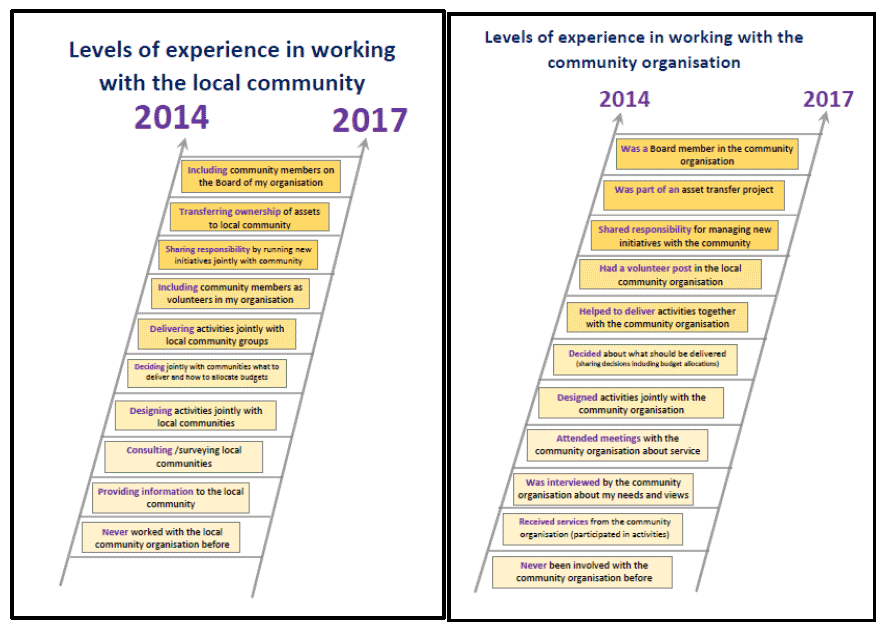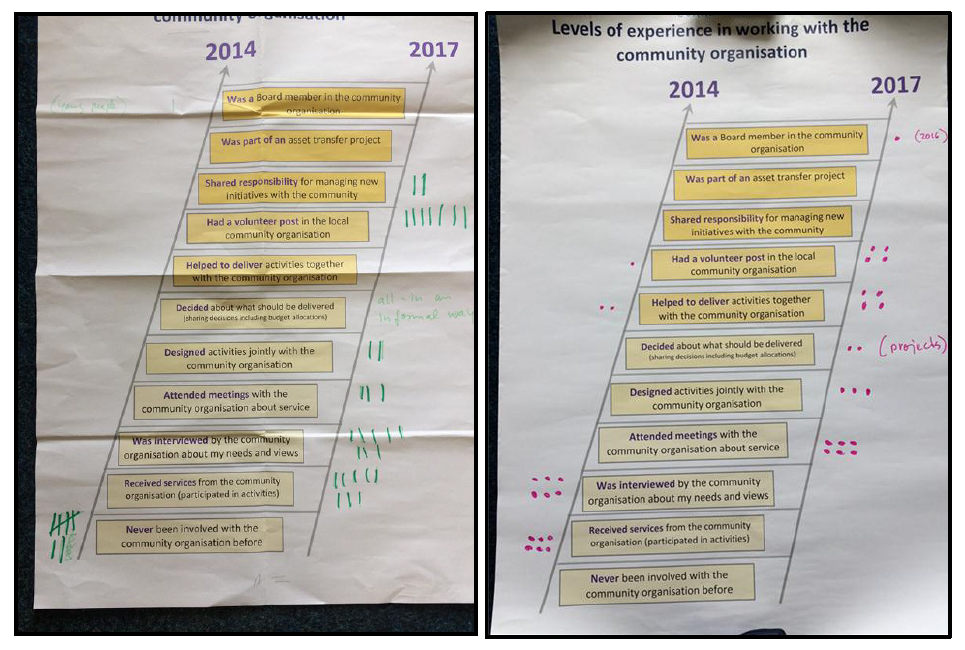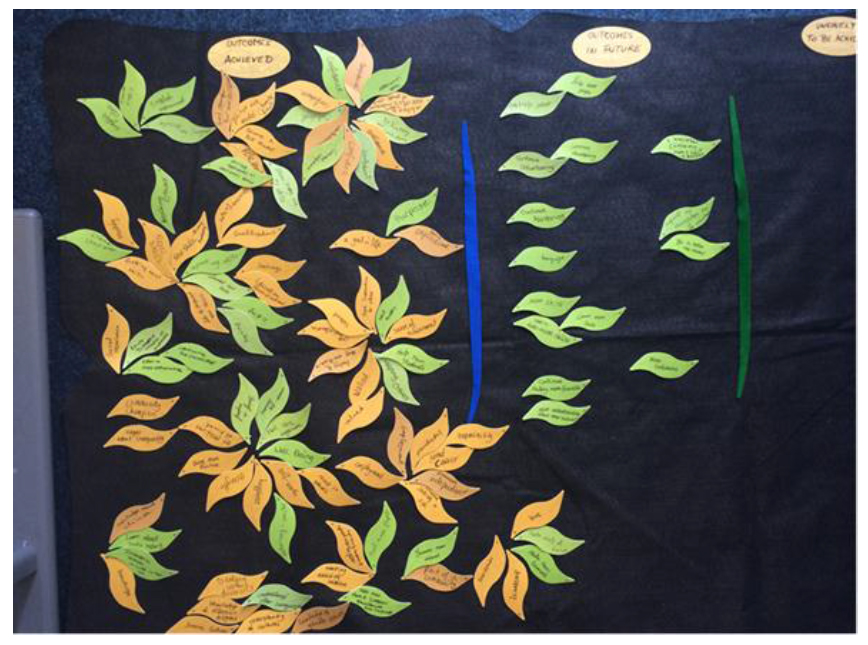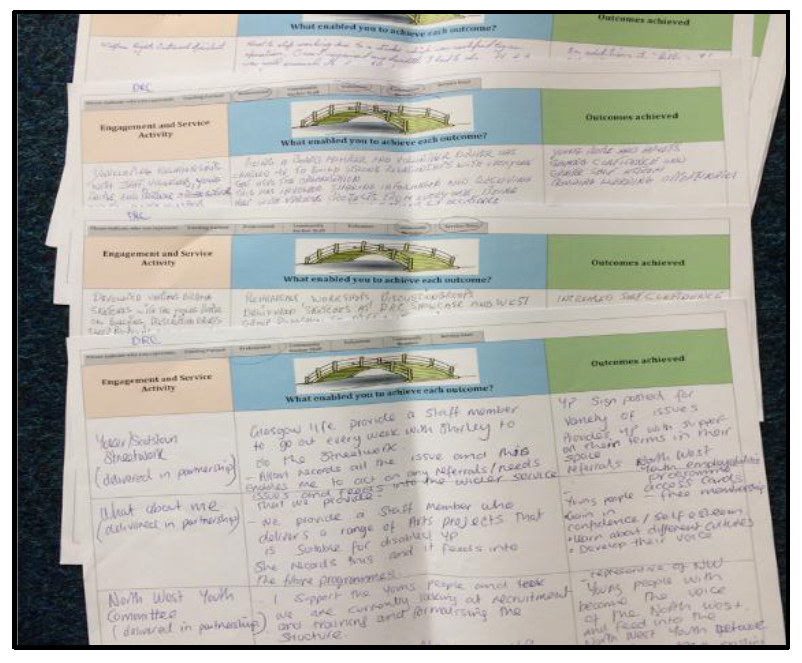Community-led regeneration approach: review
Findings from an independent review into the partnership approach delivered by the People and Communities Fund (PCF).
Appendix B: Detailed Research Tools
Assessing Co-Production levels
To assess the levels of co-production from all participants' perspectives, two 'Co-production ladders' were designed and used in the workshops (one for Community Anchors and Partner organisations reaching out to the community and one for Volunteers and Beneficiaries seeking to get involved with Community Anchors) illustrated in Figure B.1 (below).
Figure B.1: Co-Production Ladders

Each participant was asked to identify whether they were involved in each stage of co-production, ranging from providing information to the local community, to sitting on the board of the community group.
Completed Development Ladders demonstrate actual project co-production pathways since 2014. Figure B.2 (below) shows some examples of completed ladders and typical findings: a lack of progression amongst community anchor staff and partners due to existing high levels of co-production and large amounts of progression among community members and beneficiaries.
Figure B.2: Completed Co-Production Ladders

Thinking About Achievements
In order to identify what kind of effects (outcomes) and achievements participants experienced from the projects, the Ketso workshop facilitation kit was used. This was generally conducted as a combined exercise with all workshop participants and involved each participant writing what they had achieved on 'leaves' which were supplied to them. Each type of participant was supplied with a different coloured leaf:
- Community members - Green;
- Community Anchor Staff - Orange; and
- Wider Partners - Grey.
Once particpants had written their achievements, each leaf was placed on the Ketso mat and grouped by theme. Figure B.3 shows a completed Ketso kit, and key themes and type of participant are easily identifiable through the groupings and colours.
Figure B.3: Completed Ketso Kit

Exploring the Learning Journey in Detail
The next stage involved more detailed investigation of workshop participants' individual learning journeys. This took the form of 'mini-interviews' which asked participants to identify what activities they undertook, what outcomes stemmed from these activties, and how these activities led to these outcomes. Figure B.4 presents examples of completed mini-interview sheets.
Figure B.4: Completed Mini-Interview sheet

Contact
There is a problem
Thanks for your feedback